Rocky Mountain Picture Show by Ben Fullerton

'Ben Fullerton'
From tall peaks to tiny wildflowers, Rocky Mountain National Park teems with stunning subjects. Get inspired with these images from photographer Ben Fullerton—and learn how to capture your own pro-quality shots.
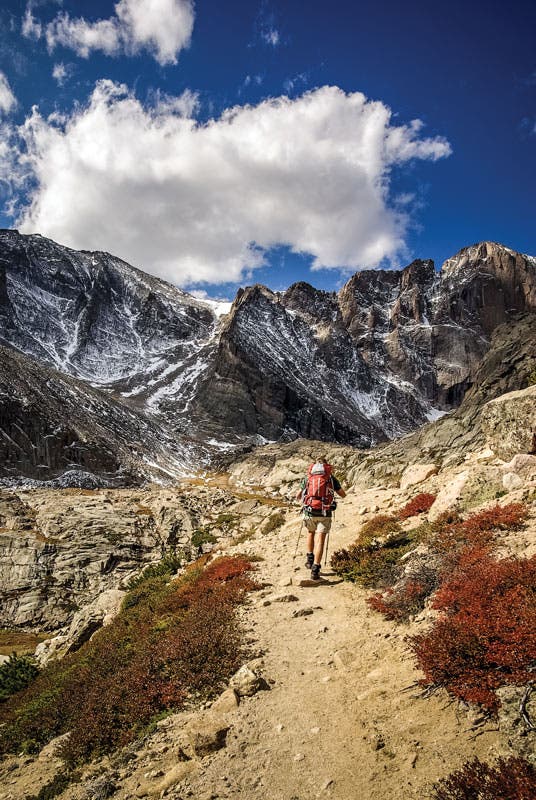
Rocky Mountain High on Chasm Lake Trail
Reach the snowy cirque below Longs Peak 4.2 miles up the Chasm Lake Trail; the summit lies another 4 grueling miles ahead.
Pro tip: Perfect centering is boring, so use the Rule of Thirds. Imagine two evenly spaced horizontal and two vertical lines on the image and position your subject (like the hiker) where two lines cross.
Tools: Pentax K10D camera, 14mm lens, ISO 100, f/9, 1/250 second
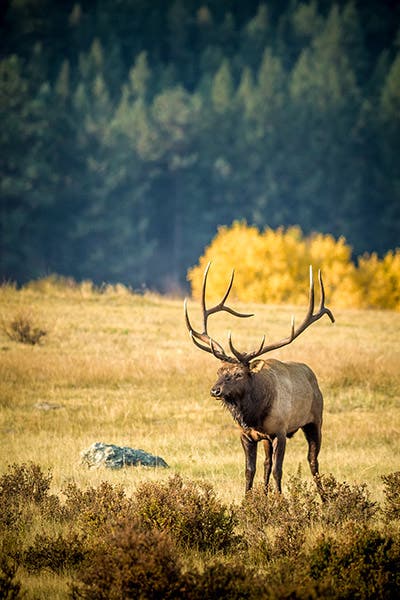
King of the Hill in Elk Meadows
During the autumn rut, bull elk gather large herds of females (called cows) in the park’s wide meadows, making for excellent viewing opportunities.
Pro tip: Position yourself with purpose. To create dramatic juxtaposition, Fullerton framed this bull against the golden aspen and used a shallow depth of field to make the animal pop. “Then I just had to wait for him to lift his rack,” says Fullerton.
Tools: Pentax K-30 camera, 300mm lens, ISO 200, f/4, 1/800 second
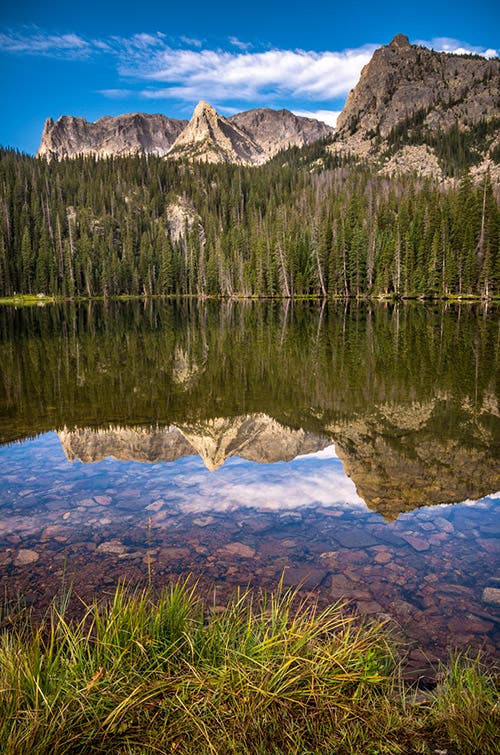
Mirror, Mirror, Fern Lake
See this serene subalpine pool on a moderate, 7.6-mile round-trip hike from the Fern Lake Trailhead.
Pro tip: Use a polarizing filter to capture richer, more saturated colors and to remove unwanted reflections. Fullerton used one on a half-effect setting to keep the water in the foreground transparent while preserving the reflection of the peaks above.
Tools: Pentax K-5 camera, 16mm lens, ISO 80, f/13, 1/25 second
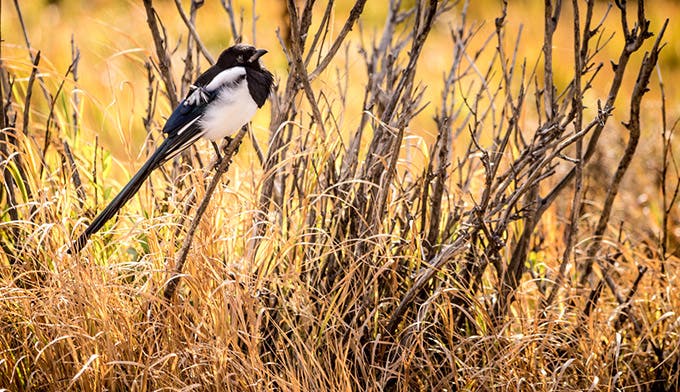
Wing It Off-Trail near Elk Meadows
This black-billed magpie is one of 280 bird species found in the park.
Pro tip: Place your subject to one side or the other, not smack in the center, for a more dynamic composition, and have the animal look into the frame (rather than turning its back on the rest of the image).
Tools: Pentax K-5 camera, 300mm lens, ISO 80, f/4, 1/200 second
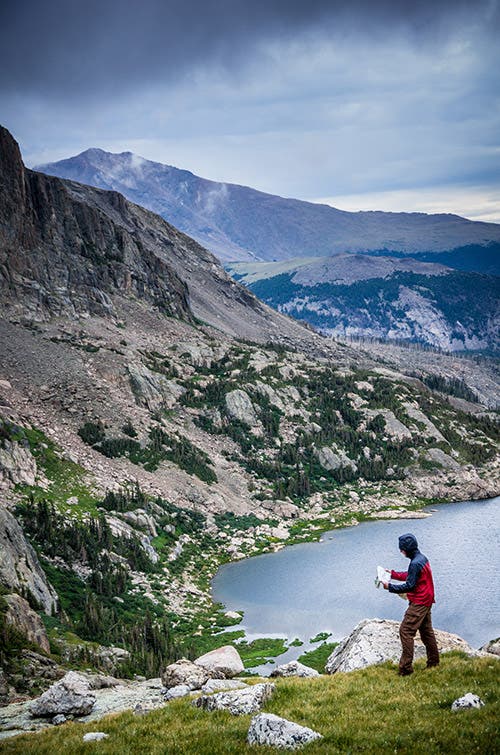
Off the Map at Bluebird Lake
A hiker consults his map on the flanks above Bluebird Lake, accessible via a 12-mile round-trip hike in the park’s Wild Basin region. Rocky’s tallest mountain, 14,259-foot Longs Peak, hulks in the distance.
Pro tip: Choose a perch that creates maximum impact by playing your subject off against the background. “If I had shot this from a lower angle, the hiker’s head and shoulders would overlap with the upper shoreline of the lake,” says Fullerton. “By keeping his upper body contained in front of the lake, he’s the first thing your eye sees. It’s like a subliminal message to your brain, saying, ‘This is important.’”
Tools: Pentax K-5 camera, 40mm lens, ISO 200, f/5.6, 1/400 second
Shoot Your Best Landscapes Ever
4 tips for capturing big scenery
Start with a lens that’s wide enough (14-24mm) to capture a grand sweep of mountain terrain, and a tripod that lets you shoot in any light. Next, choose a high f-stop (f/11 to f/22) to increase the depth of field (the higher the f-stop, the more land is in focus). Finally, include an interesting object in the foreground, like a flower or tree.
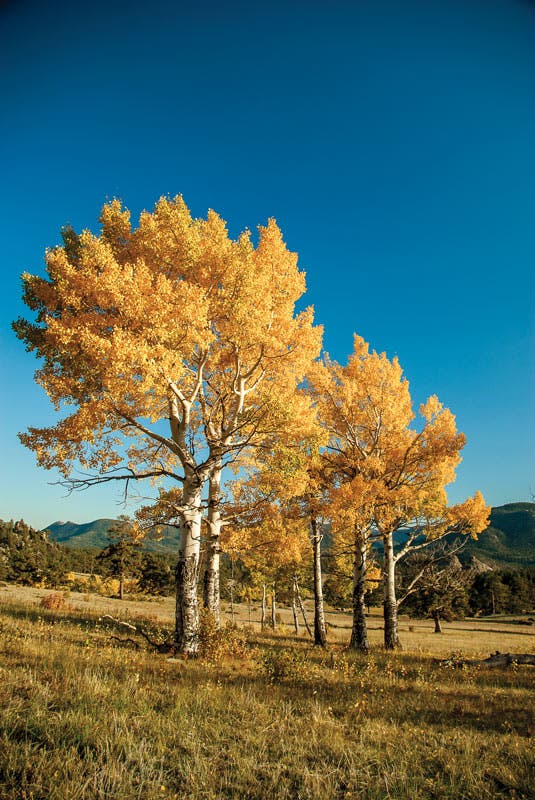
Gold Rush on Black Canyon Trail
Rocky’s plentiful aspens take on a bright gold hue between mid-September and early October, depending on elevation; Fullerton shot these trees near Lumpy Ridge in the park’s northeast corner on a bluebird day in late September. See them along the 3-mile (one-way) trail from the Twin Owls Trailhead, or link it to the Dark Mountain and Gem Lake Trails for an 8-mile loop.
Pro tip: Try shooting in the afternoon to take advantage of the rich colors and soft angle of late-in-the-day light. Fullerton positoned these aspens so that the sun illuminates them from the right side, making them glow against the deep blue sky.
Tools: Pentax K10D camera, 18mm lens, ISO 250, f/7.1, 1/100 second
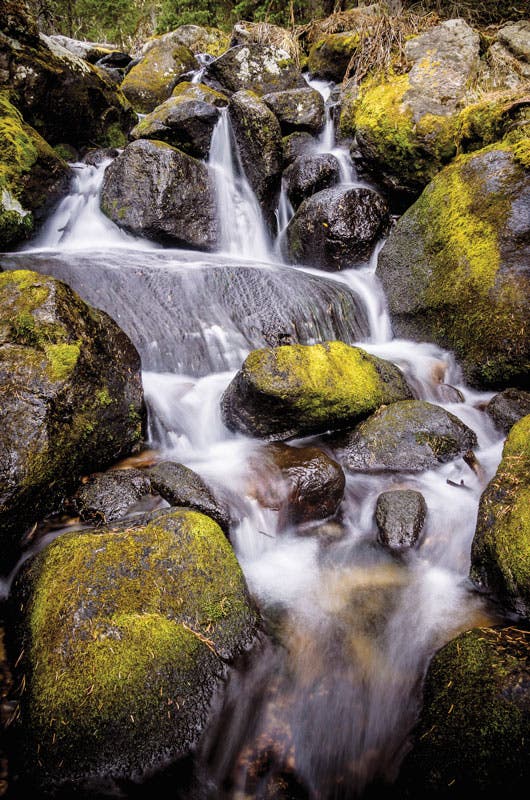
River Dance on East Longs Peak Trail
A stream cascades down a slope on the trail to Longs Peak. The park’s many waterfalls are most dramatic in late spring, when snowmelt turns them into swollen torrents. Don’t-miss cascades: Adams Falls (west side) and Ouzel Falls (east).
Pro tip: Overcast days are perfect for shooting details, close-ups, and shots like this one because the flat, even light eliminates shadows. And because cloudy days are much dimmer, “You can achieve shutter speeds low enough to make the water look milky without the use of neutral density filters, like you would on a bright day.”And at such slow speeds, a tripod is mandatory to eliminate shake.
Tools: Pentax K-5 Camera, 18mm lens, ISO 80, f/11, 1 second
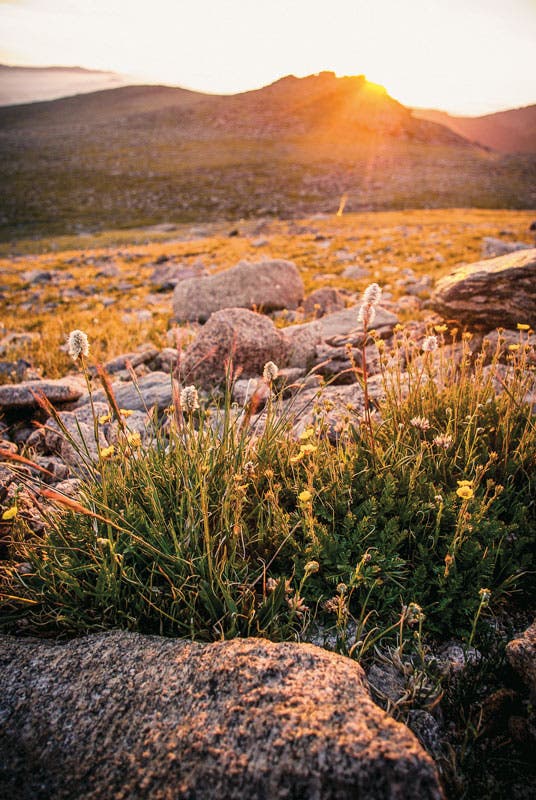
Dawn Patrol on East Longs Peak Trail
The day’s first light wakes up the tundra in the park’s highest country. Hiking above treeline is best done early in the day to avoid the frequent thunderstorms that roll into the mountains most summer afternoons; plan to be off the high tundra and back in the trees by 1 p.m.
Pro tip: Get up early. Fullerton was in position to capture this scene at sunrise only by beginning his hike in the dark at 3 a.m.
Tools: Pentax K10D camera, 18mm lens, ISO 200, f/4.5, 1/30 second